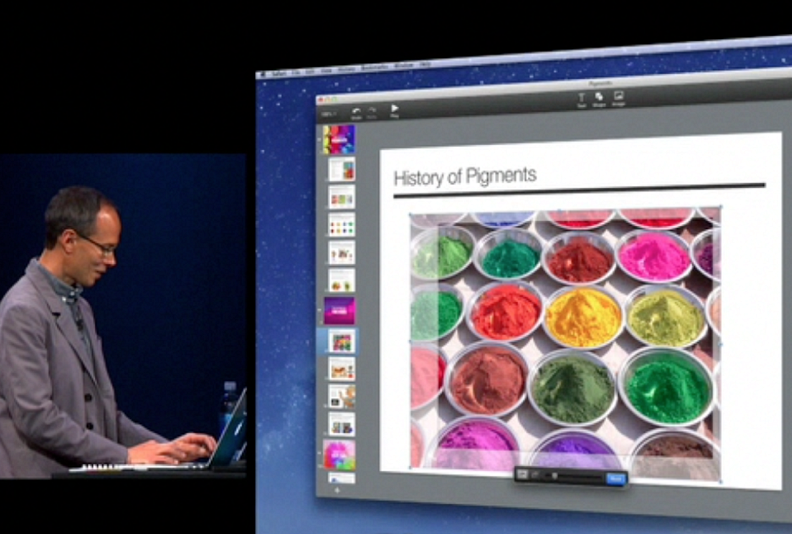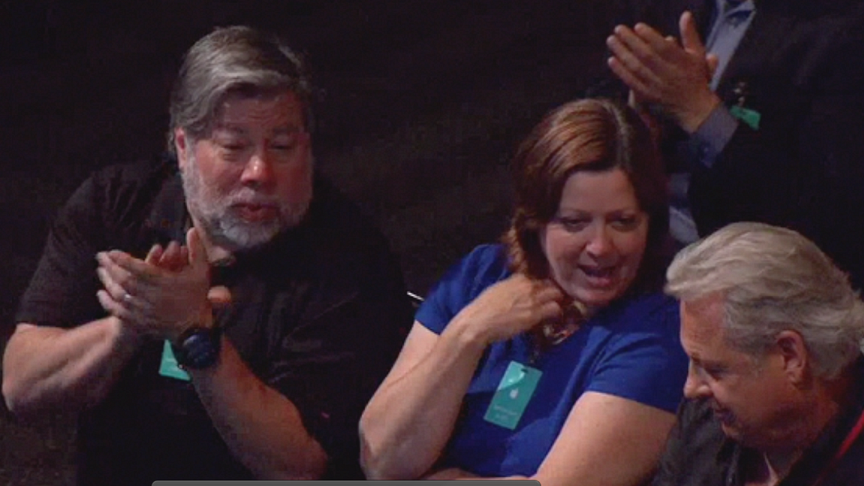Cassandra - WWDC (3): iWork to Ive and iOS

AMITIAE - Monday 10 June 2013
|
Cassandra - WWDC (3): iWork to Ive and iOS |
 |
|
|
By Graham K. Rogers
This is another new direction, bringing in current Windows users (or Linux - there was no mention of this - there is Chrome for Linux) by way of the neutral browser. To make this clear, he immediately began a demo of the suite, using Safari on a Mac. In the iCloud window, as well as the usual icons (Contacts, Calendar, Mail) there were the 3 icons for iWork apps. Beginning with Pages, a panel showed the documents he had already created on the Mac and that had been saved in iCloud. Another panel showed templates for new documents. As he worked, the Inspector was displayed on the right side of the browser page, with some formatting controls at the top of the page. Showing the pragmatism that is becoming clearer at Apple, this WWDC (e.g. use of SMB2 networking in Mavericks to replace AFP), handling Microsoft DOC files is a simple click from the Mac desktop and a drag into the browser page. Numbers behaved just like Pages: as if it were a desktop application. The same was so for the Keynote demo he ran, including animations and image rotation, as well as other tricks usually associated with desktop applications.

He concluded with the significant point that "You can create a document on your Mac, edit on your PC and you can present from your iPhone." iWork for iCloud is currently available only as a developer beta, but iCloud users will be offered a beta test later in the year. As the audience applauded, the camera cut to Steve Wozniak again and this time there was a sign of tacit approval.

Cook wanted to nail the point that Apple devices were more widely used, so brought in a graph of smartphone usage which showed that iPhone owners use the device 50% more than Android users use their phones: "Incredible, but maybe not surprising", he said to laughs. He added a graph that showed web share (iOS 60%, Android 24%, Other 16%); then another showing iPads have 82% share of web markets while all others have 18%. This shows in more mobile shopping traffic and happy customers. He built on this idea more with the results of the J. D. Power Award for Customer Satisfaction: won 9 consecutive times by Apple. With a number of other slides and facts comparing iOS with the various versions of Android, Cook was on the offensive, then announced, "iOS7: the biggest change to iOS since the introduction of the iPhone" (a phrase he repeated later). A video was run to explain the thinking behind iOS 7. Jony Ive began by explaining about design, - it defines so much of our experience. His buzzwords were "Simplicity", "Clarity", "Efficiency" adding words about the absence of clutter: a clear signal concerning the fate of skeuomorphism. The video showed some impressive changes here, particularly the 3D feeling giving a sense of depth to the display. From the audience responses as the video was being played, a lot is right, straight out of the box. I have never before seen a standing ovation at a developer conference.
See Also:
Graham K. Rogers teaches at the Faculty of Engineering, Mahidol University in Thailand where he is also Assistant Dean. He wrote in the Bangkok Post, Database supplement on IT subjects. For the last seven years of Database he wrote a column on Apple and Macs. |
|

For further information, e-mail to

|

|